A few weeks back, we contrasted Intel’s new Core Ultra 9 285 K against AMD’s Ryzen 7 9800 X 3 D in 45 games to see just how the two contrasted across an enormous range of titles. The end outcome was a discriminatory loss, with the 9800 X 3 D delivering 24 % even more performance typically. This is not perfect for Intel and definitely not a fantastic result for those hoping to get among their new Arrowhead Lake CPUs for pc gaming.
From that comparison, it was clear that spending around $ 630 on the Ultra 9 285 K for gaming is a negative concept, a minimum of for now. Since then, we’ve additionally compared the 9800 X 3 D with the Core i 9 – 14900 K in 45 games. While the i 9 install a more powerful battle, the Zen 5 -based 3 D V-Cache part was still, generally, 18 % faster.
Yet all this screening obtained us wondering: how do the 285 K and 14900 K contrast throughout such a huge option of games?
Although we have actually currently developed that this comparison practically isn’t relevant (as gamers shouldn’t be checking out either a Core i 9 or Core Ultra 9 cpu), we’re much more interested in just seeing how they compare.
There are two important points we intend to uncover right here. First, does the 6 % margin favoring the 14900 K over the 285 K, seen in our day-one testimonial, translate to larger standards with 45 video games? Second, we want to develop standard gaming efficiency for the 285 K throughout a wide variety of games, which can be utilized to track the progression of any updates.
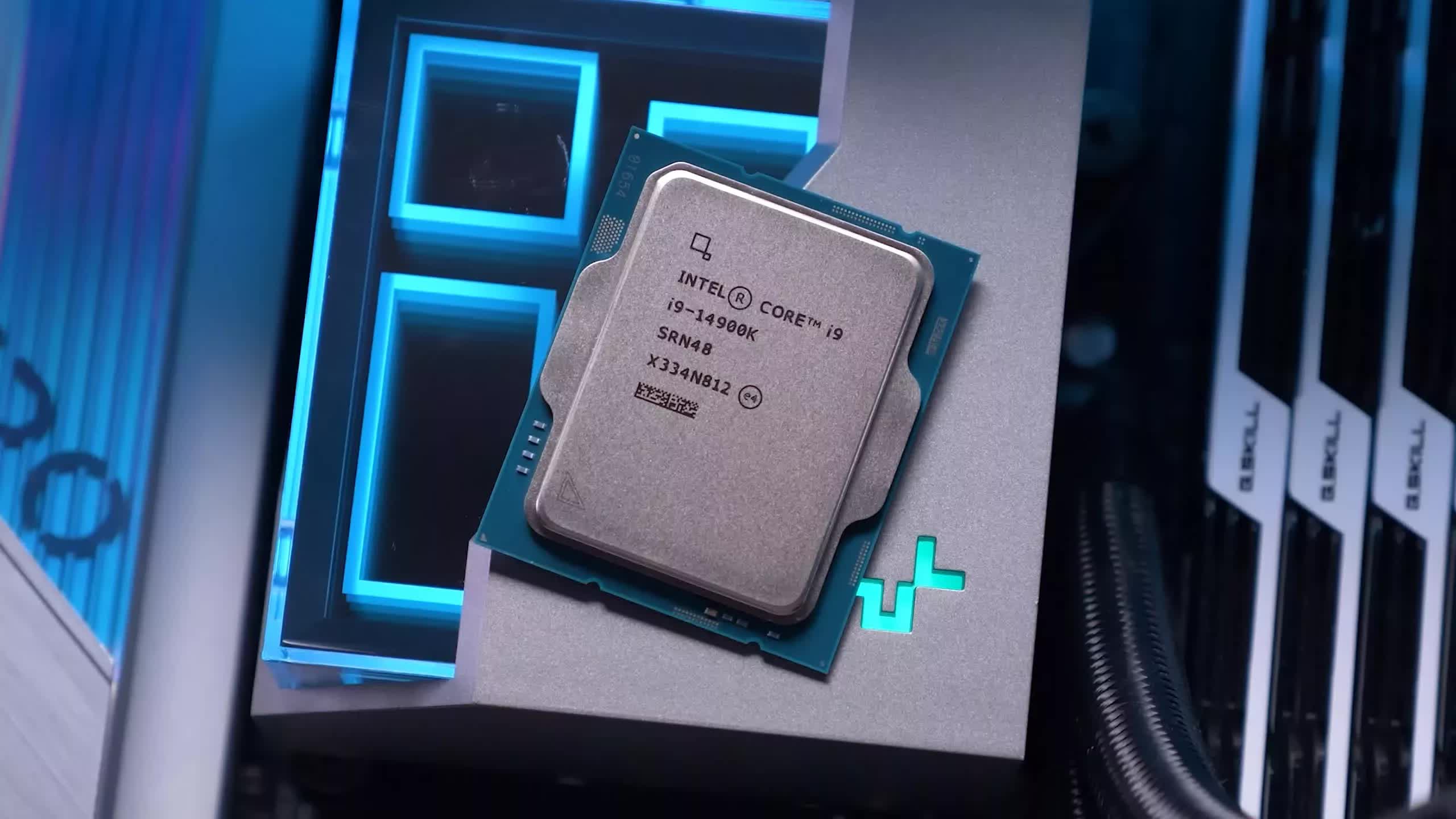
Although we have actually already done that with the 9800 X 3 D evaluation, Intel at first asserted parity in between the 285 K and 14900 K. They’re fairly evenly matched on the whole, though also in the day-one review, we observed some big fluctuations in performance in either direction. It will certainly interest see exactly how they compare across a much bigger variety of video games.
Examination Configuration
For testing, all CPU video gaming criteria will be performed at 1080 p utilizing the GeForce RTX 4090 If you wish to learn why this is the very best method to examine CPU performance for video games today and in the future, check out our explainer for even more details. The 14900 K has actually been tested utilizing the extreme account with DDR 5 – 7200 memory, while the 285 K has actually been coupled with DDR 5 – 8200 memory, especially the brand-new CUDIMM range.
There was a lot of confusion surrounding this topic, with lots of people not realizing that the DDR 5 – 8200 memory we coupled with the Arrowhead Lake CPUs in our day-one evaluations was CUDIMM memory. Some asserted that had we made use of CUDIMM memory, these new Intel CPUs would carry out better, but this merely isn’t the instance. Technically speaking, if you run CUDIMM and UDIMM memory at the same frequency and timings, the resulting efficiency will certainly be identical.
| CPU | Motherboard | Memory |
|
AMD Ryzen 7000 Series |
Gigabyte X 670 E Aorus Master [BIOS F33d] | G.Skill Spear Z 5 RGB 32 GB DDR 5 – 6000 CL 30 – 38 – 38 – 96 Windows 11 24 H 2 |
| AMD Ryzen 5000 Series | MSI MPG X 570 S Carbon MAX Wi-fi [BIOS 7D52v19] | G.Skill Ripjaws V Collection 32 GB DDR 4 – 3600 CL 14 – 15 – 15 – 35 Windows 11 24 H 2 |
| Intel Core Ultra 200 S | Asus ROG Maximus Z 890 Hero [BIOS 0805] | G.Skill Trident Z 5 CK 32 GB DDR 5 – 8200 CL 40 – 52 – 52 – 131 Windows 11 23 H 2 [24H2 = Slower] |
| Intel 12 th, 13 th & & 14 th | MSI MPG Z 790 Carbon WiFi [BIOS 7D89v1E] | G.Skill Trident Z 5 RGB 32 GB DDR 5 – 7200 CL 34 – 45 – 45 – 115 Windows 11 24 H 2 |
| Graphics Card | Power Supply | Storage |
| Asus ROG Strix RTX 4090 OC Version | Kolink Regulator Gold ATX 3.0 1200 W | TeamGroup T-Force Cardea A 440 M. 2 PCIe Gen 4 NVMe SSD 4 TB |
| GeForce Game Ready Vehicle Driver 565 90 WHQL | ||
The advantage of CUDIMM memory is that it can much more quickly attain higher frequencies while preserving security. So, while CUDIMM memory must enable greater rates, if both memory types can attain the exact same frequency and have the same timings, the efficiency will coincide. Regardless, we are making use of CUDIMM memory and have done so since we first checked Arrowhead Lake.
Now, let’s study the data …
Standards
The Last people, Cyberpunk, Hogwarts Tradition, ACC, Spider-Man
As seen in our day-one review, the 285 K performs surprisingly well in The Last of Us Part 1, where it’s 17 % faster than the 14900 K when comparing the average framework rate. Regrettably, that result is an outlier, as we locate it’s 8 % slower in Cyberpunk, 4 % slower in Hogwarts Heritage, and 8 % slower in ACC. We do see a small efficiency improvement in Spider-Man, with a 7 % uplift in this instance.

Baldur’s Entrance 3, Homeworld 3, APTR, Trip Simulator, Starfield
Next off, we have Baldur’s Gateway 3, where the 285 K is 6 % slower. It’s not a huge margin, however any efficiency regression with a brand-new generation is concerning. It’s also 3 % slower in Homeworld 3, however it’s the 17 % performance loss in A Plague Tale: Requiem that stands apart, with 1 % lows down by 32 %. Fortunately, performance remains concerning the same in Microsoft Flight Simulator and Starfield. While not fantastic news, we’re at least not seeing any type of regression in these instances.

Perspective Forbidden West, Perspective Absolutely No Dawn, Watch Dogs, Far Cry 6, T&L
Moving on to Horizon Forbidden West, the 285 K was 7 % faster than the 14900 K, an unusual uplift. However, it was 10 % slower in Horizon Zero Dawn. It was likewise 12 % slower in Watch Pets: Legion, 12 % slower in Far Cry 6, and 3 % slower in Throne and Liberty.

Hitman 3, Callisto Protocol, SoTR, Halo, Warhammer 3
This next batch of video games shows primarily competitive results, meaning the 285 K is able to keep up with the previous-generation design. The 14900 K was just a little quicker in Hitman 3, yet it was 14 % quicker in The Callisto Protocol. We then have a tie in Shadow of the Burial Place Raider, a little 7 % win for the 14900 K in Halo Infinite, and comparable lead to Warhammer III.

Black Ops 6, Borderlands 3, Riftbreaker, Remnant 2, SWJS
Next, in Telephone Call of Task: Black Ops 6, the 14900 K and 285 K were neck and neck, achieving 296 fps. The 285 K was simply 4 % slower in Borderlands 3 and 13 % slower in The Riftbreaker. Then we have Remnant II, where efficiency was nearly similar, complied with by Celebrity Wars Jedi: Survivor, where the 285 K was 5 % slower.

Battle Thunder, Head and Bones, Returnal, Cog & & Clank, Dying Light 2
The 285 K doesn’t make out also in War Rumbling, coming in 19 % slower than the 14900 K, however it was 6 % much faster in Skull and Bones. There was comparable performance in Returnal and Ratchet & & Clank: Rift Apart, adhered to by a 6 % efficiency loss in Dying Light 2

Forza Perspective 5, Forza Motorsport, Gears 5, Ghost of Tsushima, Quest
In this following batch of results, the 285 K was slower than the 14900 K in all five examples. It was just 4 % slower in Forza Horizon 5, but 17 % slower in Forza Motorsport and 13 % slower in Gears 5 Ghost of Tsushima had actually blended results: the 285 K was 2 % slower when considering the ordinary framework price, however 9 % faster for the 1 % lows. Regrettably, the solid 1 % reduced efficiency didn’t stand up in Search: Showdown, where the average frame price visited 3 %, and the 1 % lows were hit with a large 22 % decline.

Globe Battle Z, F 1 24, Rainbow Six Siege, Counter-Strike 2, Fortnite
Our following set of outcomes reveals even more of the exact same: the 285 K was 6 % slower in World Battle Z, 5 % slower in F 1 24, 6 % slower in Rainbow Six Siege, and had similar efficiency in Counter-Strike 2 Then, we have Fortnite, which sadly still does not work on any one of the brand-new Arrow Lake CPUs. The game freezes and secures the entire system as a result of a compatibility issue with Easy Anti-Cheat. Intel understands the concern, yet a repair has not been released yet.

Assassin’s Creed x 2, Room Marine 2, SW Outlaws, Dragon Age: The Veilguard
Finally, in the last five video games examined, the 285 K is, at best, slightly slower than the 14900 K. For example, it was 5 % slower in Assassin’s Creed Mirage, just 1 % slower in Valhalla (though the 1 % lows were inadequate), and the most effective situation result was in Room Marine 2, where performance was about the same. Then we saw a 6 % loss in Celebrity Wars Outlaws and up to a 15 % performance loss in Dragon Age.

45 Game Average
In our day-one evaluation, the 14900 K was 6 % faster typically, though the average was determined a bit in a different way making use of the geometric mean. The point is, the 14900 K is still much faster, 5 % throughout the 45 -game sample, with several substantial results and really few examples where the 285 K is actually quicker.
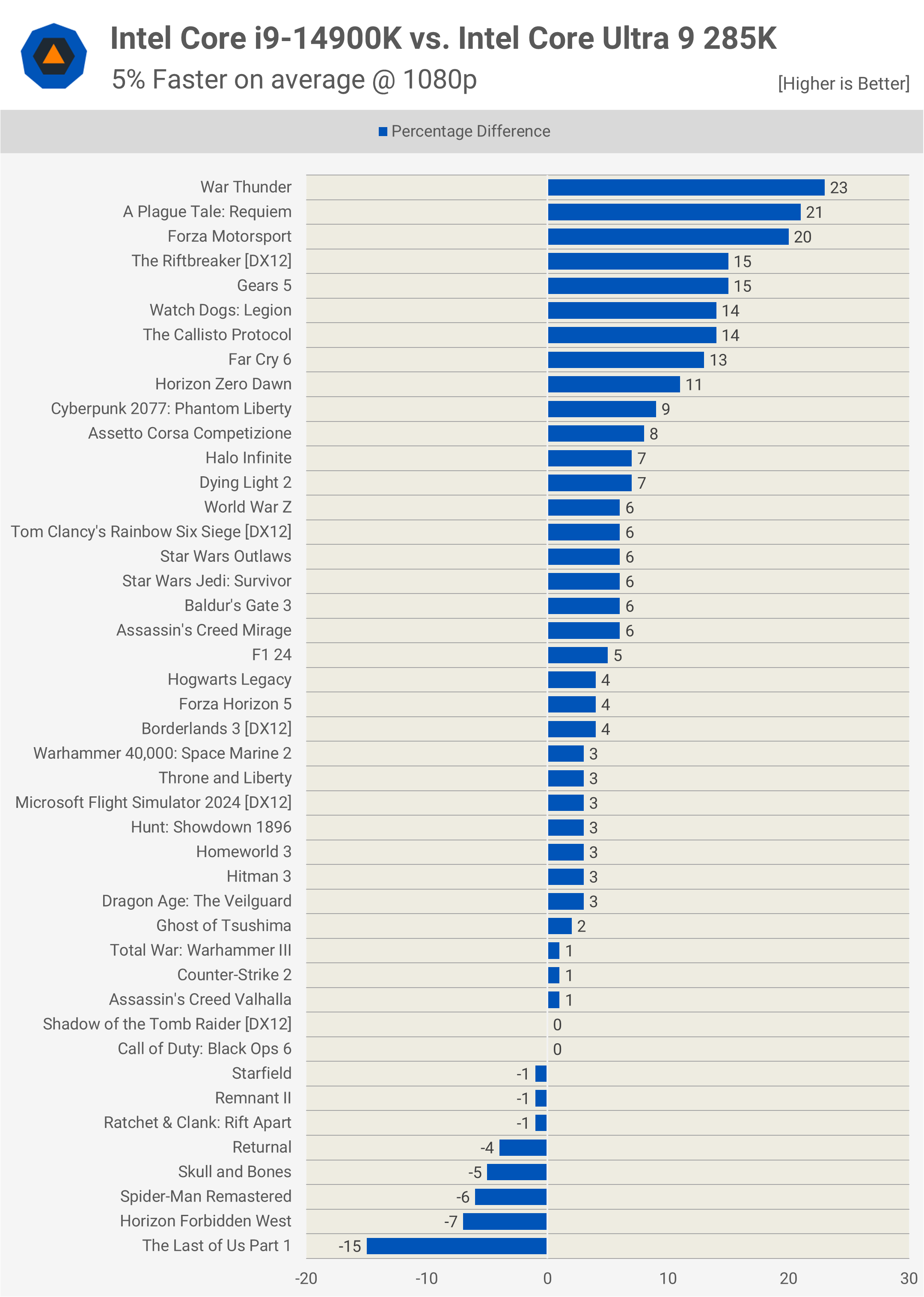
The best outcome for the 285 K was in The Last people Component 1, yet beyond that, there isn’t much we can indicate. Meanwhile, the 14900 K was faster by dual numbers in 9 of the video games evaluated, and 20 % or more in three of them.
What We Learned
So, there you have it– confirmation of what we found when initial testing the Core Ultra 285 K. It’s around 5 % slower than the 14900 K for pc gaming, however sometimes, it can be much slower than that. In regards to general pc gaming efficiency, the 285 K sits in between the 12900 K and 14900 K, which is a good outcome offered exactly how little power it makes use of in contrast.
However, an efficiency regression from the previous generation isn’t something consumers like to see, even if there are substantial power savings available. In this certain instance, the power efficiency enhancements are particularly relevant, thinking about AMD is using substantially far better pc gaming performance while making use of also less power.
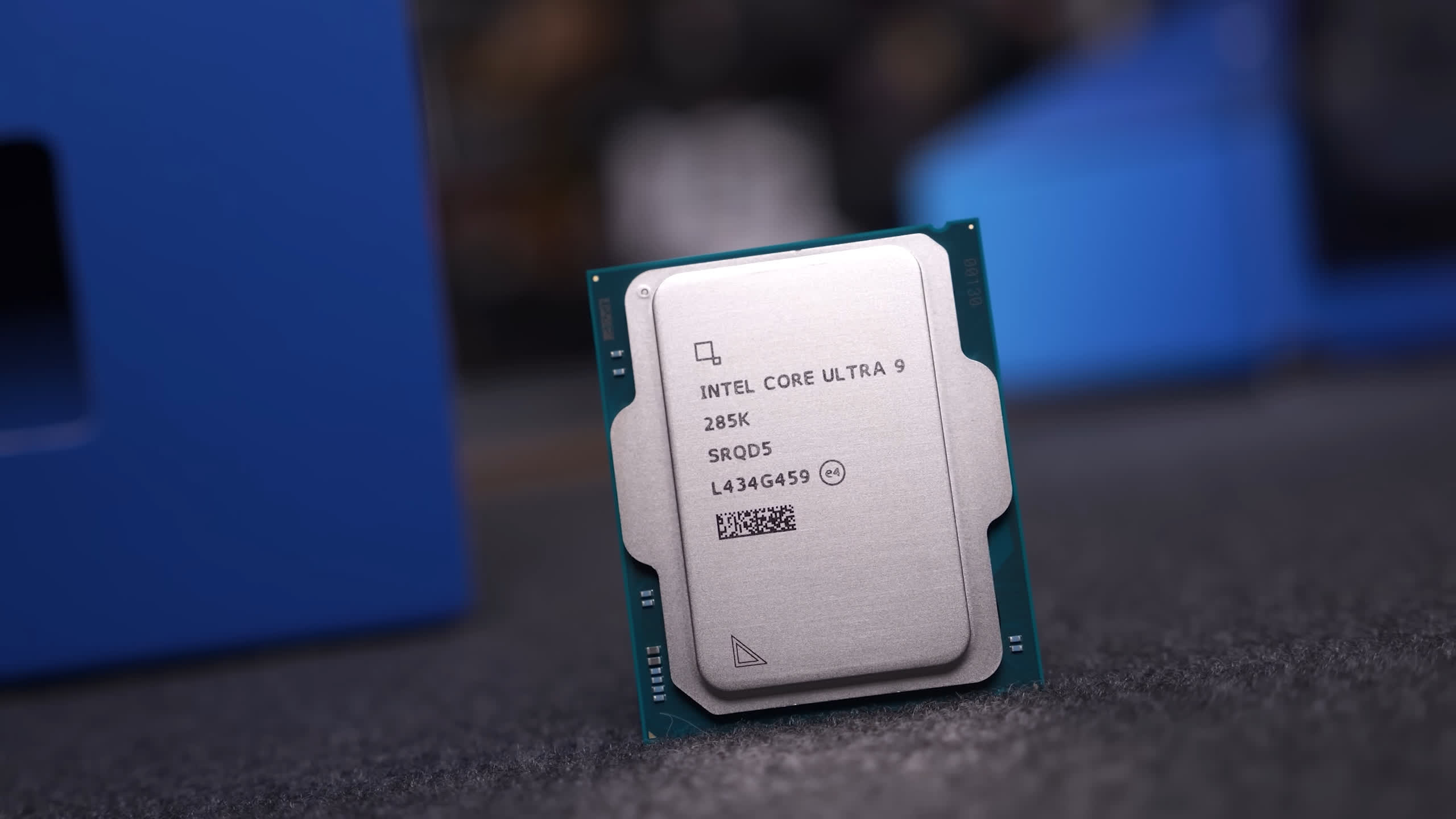
Throughout this very same range of games, the 9800 X 3 D is 18 % faster than the 14900 K and 24 % faster than the 285 K, which places Intel in a limited setting today. My hope is that Intel can deliver on their guarantee of improved Arrowhead Lake efficiency, which is set up for delivery this month. We’ll need to wait and see what results that.
If they can a minimum of match the 14900 K’s gaming efficiency, that will assist, as productivity performance and power consumption are solid. Nevertheless, for parts like the 285 K to become practical options, Intel requires to address both the video gaming efficiency and compatibility problems. They additionally need to minimize the rate– $ 630 is just way too much for what the Core Ultra 9 offers.
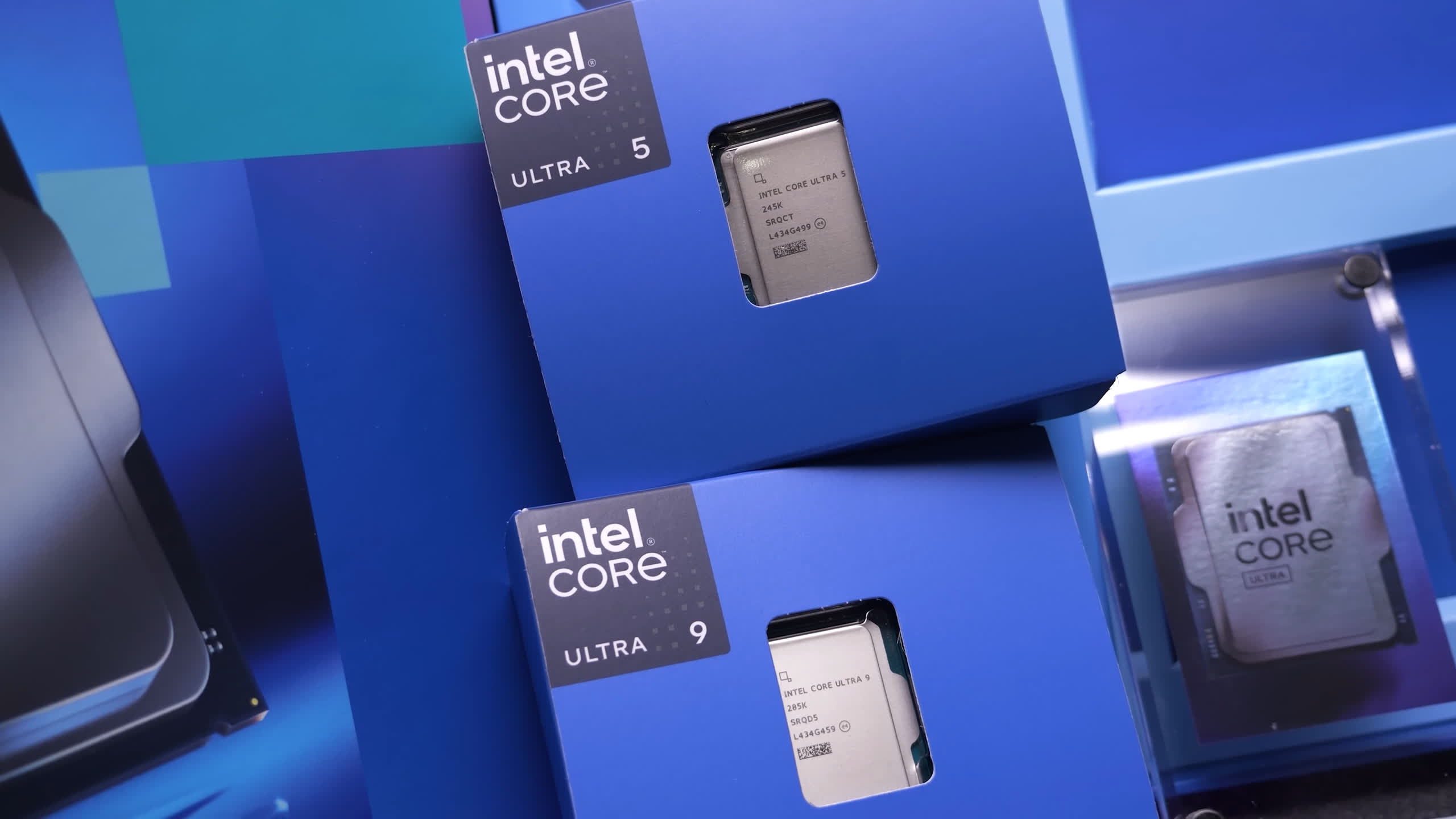
That stated, we’re unsure Intel plans to offer a number of these cpus anyhow. They do not show up to have made many of them, and resupplies have been almost non-existent, at least in the united state, which is weird given that demand is very low. In Australia, it’s in fact extremely simple to purchase a 285 K, as most sellers have supply. I’m not stunned, though, considering the asking cost is $ 1, 100 AUD, while the 9950 X, for example, sets you back $ 970– quite a bit cheaper.
We wish to reiterate that the 285 K was benchmarked using CUDIMM memory, so we are checking Arrowhead Lake in its optimum out-of-the-box configuration. Speaking of CUDIMM memory, it’s not a silver bullet for Arrowhead Lake– it does not significantly enhance efficiency over routine memory. In fact, as we noted earlier, provided the same regularity and timings, it doesn’t boost performance in any way. That’s possibly a good idea, as it’s both difficult to locate and very costly.
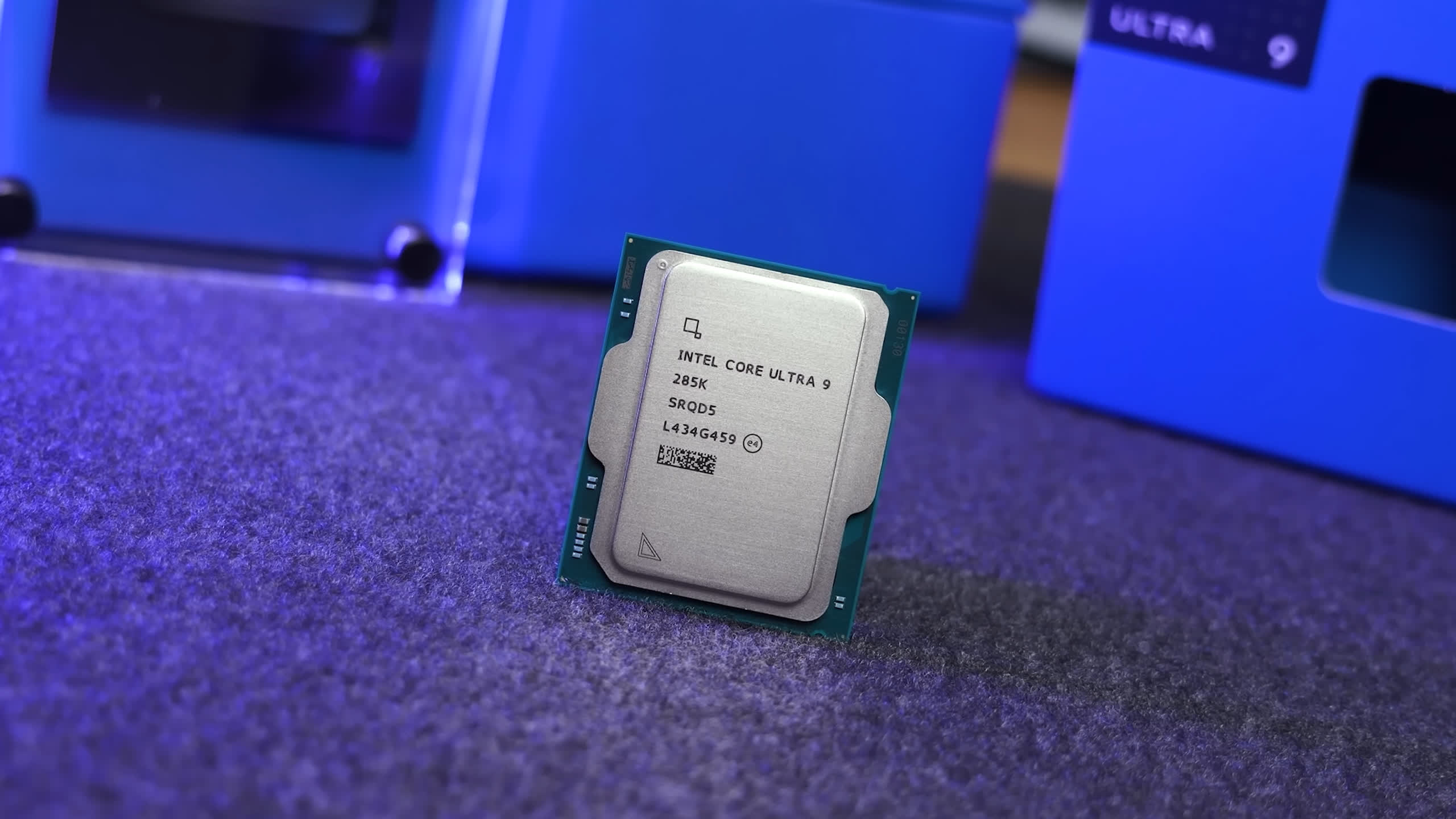
Most DDR 5 – 8000 packages cost north of $ 300, which is silly. Nonetheless, we have actually seen an 8200 set with comparable speeds to the set we utilize for testing retail for just timid of $ 200, which is still costly, however much better than $ 300 For referral, the memory we make use of to check the 9800 X 3 D costs $ 110 for a 32 GB kit. If you’re going to get an Arrowhead Lake CPU, our advice is to grab a DDR 5 – 7200 CL 34 set for around $ 120 Efficiency is virtually identical to those exceptional 8200 CUDIMM sets for a portion of the price.
That’s mosting likely to do it for this testimonial. We do prepare to revisit this screening once Intel turns out their efficiency fix.



